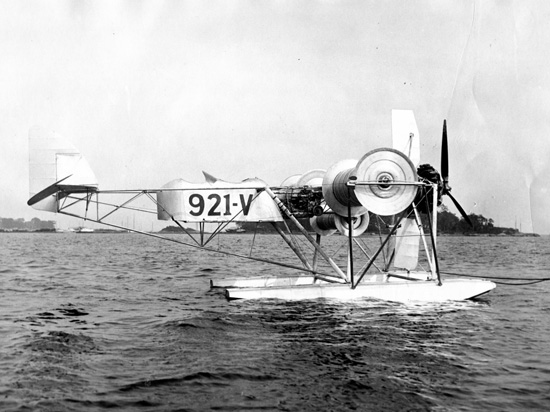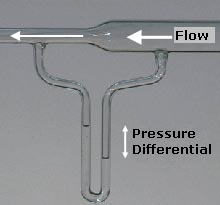|
Magnus Effect
The Magnus effect is a phenomenon that occurs when a spin (geometry), spinning Object (physics), object is moving through a fluid. A lift (force), lift force acts on the spinning object and its path may be deflected in a manner not present when it is not spinning. The strength and direction of the Magnus force is dependent on the speed and direction of the rotation of the object. The Magnus effect is named after Heinrich Gustav Magnus, the German physicist who investigated it. The force on a rotating cylinder is an example of Kutta–Joukowski theorem, Kutta–Joukowski lift, named after Martin Kutta and Nikolay Zhukovsky (scientist), Nikolay Zhukovsky (or Joukowski), mathematicians who contributed to the knowledge of how lift is generated in a fluid flow. Description The most readily observable case of the Magnus effect is when a spinning sphere (or cylinder) curves away from the arc it would follow if it were not spinning. It is often used by football (soccer) and volleybal ... [...More Info...] [...Related Items...] OR: [Wikipedia] [Google] [Baidu] |
Spin (geometry)
Spin or spinning most often refers to: * Spin (physics) or particle spin, a fundamental property of elementary particles * Spin quantum number, a number which defines the value of a particle's spin * Spinning (textiles), the creation of yarn or thread by twisting fibers together, traditionally by hand spinning * Spin (geometry), the rotation of an object around an internal axis * Spin (propaganda), an intentionally biased portrayal of something Spin, spinning or spinnin may also refer to: Physics and mathematics * Spin group, Spin(''n''), a particular double cover of the special orthogonal group SO(''n'') ** the corresponding spin algebra, \mathfrak(n) * Spin tensor, a tensor quantity for describing spinning motion in special relativity and general relativity * Spin (aerodynamics), autorotation of an aerodynamically stalled aeroplane * SPIN bibliographic database, an indexing and abstracting service focusing on physics research Textile arts * Spinning (polymers), a process for ... [...More Info...] [...Related Items...] OR: [Wikipedia] [Google] [Baidu] |
Flettner Airplane
A Flettner airplane is a type of rotor airplane which uses a Flettner rotor to provide lift. The rotor comprises a spinning cylinder with circular end plates and, in an aircraft, spins about a spanwise horizontal axis. When the aircraft moves forward, the Magnus effect creates lift. Anton Flettner, after whom the rotor is named, used it successfully as the sails of a rotor ship. He also suggested its use as a wing for a rotor airplane. The Butler Ames Aerocycle was built in 1910 and tested aboard a warship. There is no record of it having flown. The Plymouth A-A-2004 was built for Zaparka in 1930 by three anonymous American inventors. It was reported to have made successful flights over Long Island Sound. An inherent safety concern is that if power to the rotating drums were lost—even if thrust was maintained—the aircraft would lose its ability to generate lift as the drum slowed and it would not be able to sustain flight. See also * Cyclogyro * FanWing * Servo tab ... [...More Info...] [...Related Items...] OR: [Wikipedia] [Google] [Baidu] |
Bernoulli's Principle
Bernoulli's principle is a key concept in fluid dynamics that relates pressure, speed and height. For example, for a fluid flowing horizontally Bernoulli's principle states that an increase in the speed occurs simultaneously with a decrease in static pressure, pressure The principle is named after the Swiss mathematician and physicist Daniel Bernoulli, who published it in his book ''Hydrodynamica'' in 1738. Although Bernoulli deduced that pressure decreases when the flow speed increases, it was Leonhard Euler in 1752 who derived Bernoulli's equation in its usual form. Bernoulli's principle can be derived from the principle of conservation of energy. This states that, in a steady flow, the sum of all forms of energy in a fluid is the same at all points that are free of viscous forces. This requires that the sum of kinetic energy, potential energy and internal energy remains constant. Thus an increase in the speed of the fluid—implying an increase in its kinetic energy—occur ... [...More Info...] [...Related Items...] OR: [Wikipedia] [Google] [Baidu] |
Viscosity
Viscosity is a measure of a fluid's rate-dependent drag (physics), resistance to a change in shape or to movement of its neighboring portions relative to one another. For liquids, it corresponds to the informal concept of ''thickness''; for example, syrup has a higher viscosity than water. Viscosity is defined scientifically as a force multiplied by a time divided by an area. Thus its SI units are newton-seconds per metre squared, or pascal-seconds. Viscosity quantifies the internal friction, frictional force between adjacent layers of fluid that are in relative motion. For instance, when a viscous fluid is forced through a tube, it flows more quickly near the tube's center line than near its walls. Experiments show that some stress (physics), stress (such as a pressure difference between the two ends of the tube) is needed to sustain the flow. This is because a force is required to overcome the friction between the layers of the fluid which are in relative motion. For a tube ... [...More Info...] [...Related Items...] OR: [Wikipedia] [Google] [Baidu] |
Reaction Force
As described by the third of Newton's laws of motion of classical mechanics, all forces occur in pairs such that if one object exerts a force on another object, then the second object exerts an equal and opposite reaction force on the first. The third law is also more generally stated as: "To every action there is always opposed an equal reaction: or the mutual actions of two bodies upon each other are always equal, and directed to contrary parts."This translation of the third law and the commentary following it can be found in the " Principia" opage 20 of volume 1 of the 1729 translation The attribution of which of the two forces is the action and which is the reaction is arbitrary. Either of the two can be considered the action, while the other is its associated reaction. Examples Interaction with ground When something is exerting force on the ground, the ground will push back with equal force in the opposite direction. In certain fields of applied physics, such as biomechanics ... [...More Info...] [...Related Items...] OR: [Wikipedia] [Google] [Baidu] |
Newton's Laws Of Motion
Newton's laws of motion are three physical laws that describe the relationship between the motion of an object and the forces acting on it. These laws, which provide the basis for Newtonian mechanics, can be paraphrased as follows: # A body remains at rest, or in motion at a constant speed in a straight line, unless it is acted upon by a force. # At any instant of time, the net force on a body is equal to the body's acceleration multiplied by its mass or, equivalently, the rate at which the body's momentum is changing with time. # If two bodies exert forces on each other, these forces have the same magnitude but opposite directions. The three laws of motion were first stated by Isaac Newton in his ''Philosophiæ Naturalis Principia Mathematica'' (''Mathematical Principles of Natural Philosophy''), originally published in 1687. Newton used them to investigate and explain the motion of many physical objects and systems. In the time since Newton, new insights, especially around t ... [...More Info...] [...Related Items...] OR: [Wikipedia] [Google] [Baidu] |
Sketch Of Magnus Effect With Streamlines And Turbulent Wake
Sketch or Sketches may refer to: * Sketch (drawing), a rapidly executed freehand drawing that is not usually intended as a finished work Arts, entertainment and media * Sketch comedy, a series of short scenes or vignettes called sketches Film and television * ''Sketch'' (2007 film), a Malayalam film * ''Sketch'' (2018 film), a Tamil film * ''Sketch'' (2024 film), an American comedy horror film * ''Sketch'' (TV series), a 2018 South Korean series * "Sketch", a 2008 episode of ''Skins'' ** Sketch (''Skins'' character) * Sketch with Kevin McDonald, a 2006 CBC television special Literature * Sketch story, or sketch, a very short piece of writing * '' Daily Sketch'', a British newspaper 1909–1971 * ''The Sketch'', a British illustrated weekly journal 1893–1959 Music * Sketch (music), an informal document prepared by a composer to assist in composition * The Sketches, a Pakistani Sufi folk rock band * ''Sketch'' (Ex Norwegian album), 2011 * ''Sketch'' (Lilas Iku ... [...More Info...] [...Related Items...] OR: [Wikipedia] [Google] [Baidu] |
Lift (force)
When a fluid flows around an object, the fluid exerts a force on the object. Lift is the Euclidean_vector#Decomposition_or_resolution, component of this force that is perpendicular to the oncoming flow direction. It contrasts with the drag (physics), drag force, which is the component of the force parallel to the flow direction. Lift conventionally acts in an upward direction in order to counter the force of gravity, but it is defined to act perpendicular to the flow and therefore can act in any direction. If the surrounding fluid is air, the force is called an aerodynamic force. In water or any other liquid, it is called a Fluid dynamics, hydrodynamic force. Dynamic lift is distinguished from other kinds of lift in fluids. Aerostatics, Aerostatic lift or buoyancy, in which an internal fluid is lighter than the surrounding fluid, does not require movement and is used by balloons, blimps, dirigibles, boats, and submarines. Planing (boat), Planing lift, in which only the lower po ... [...More Info...] [...Related Items...] OR: [Wikipedia] [Google] [Baidu] |
Curve Ball
In baseball and softball, the curveball is a type of pitch (baseball), pitch thrown with a characteristic grip and hand movement that imparts forward spin to the baseball (object), ball, causing it to dive as it approaches the plate. Varieties of curveball include the 12–6 curveball, power curveball, and the knuckle curve. Its close relatives are the Slider (baseball), slider and the slurve. The "curve" of the ball varies from pitcher to pitcher. The expression "to throw a curveball" essentially translates to introducing a significant deviation to a preceding concept. Grip and action The curveball is typically gripped in a manner similar to holding a cup or glass. The pitcher positions the middle finger along and parallel to one of the ball’s long seams, while the thumb is placed on the seam opposite, forming a "C shape" when viewed from above, with the horseshoe-shaped seam facing inward toward the palm. The index finger is aligned alongside the middle finger, while the r ... [...More Info...] [...Related Items...] OR: [Wikipedia] [Google] [Baidu] |
Circulation (fluid Dynamics)
In physics, circulation is the line integral of a vector field around a closed curve embedded in the field. In fluid dynamics, the field is the fluid velocity field. In electrodynamics, it can be the electric or the magnetic field. In aerodynamics, it finds applications in the calculation of lift, for which circulation was first used independently by Frederick Lanchester, Ludwig Prandtl, Martin Kutta and Nikolay Zhukovsky. It is usually denoted (uppercase gamma). Definition and properties If is a vector field and is a vector representing the differential length of a small element of a defined curve, the contribution of that differential length to circulation is : \mathrm\Gamma = \mathbf \cdot \mathrm\mathbf = \left, \mathbf\ \left, \mathrm\mathbf\ \cos \theta. Here, is the angle between the vectors and . The circulation of a vector field around a closed curve is the line integral: \Gamma = \oint_\mathbf \cdot \mathrm d \mathbf. In a conservative vector field ... [...More Info...] [...Related Items...] OR: [Wikipedia] [Google] [Baidu] |
Lift Force
When a fluid flows around an object, the fluid exerts a force on the object. Lift is the component of this force that is perpendicular to the oncoming flow direction. It contrasts with the drag force, which is the component of the force parallel to the flow direction. Lift conventionally acts in an upward direction in order to counter the force of gravity, but it is defined to act perpendicular to the flow and therefore can act in any direction. If the surrounding fluid is air, the force is called an aerodynamic force. In water or any other liquid, it is called a hydrodynamic force. Dynamic lift is distinguished from other kinds of lift in fluids. Aerostatic lift or buoyancy, in which an internal fluid is lighter than the surrounding fluid, does not require movement and is used by balloons, blimps, dirigibles, boats, and submarines. Planing lift, in which only the lower portion of the body is immersed in a liquid flow, is used by motorboats, surfboards, windsurfers, sailboat ... [...More Info...] [...Related Items...] OR: [Wikipedia] [Google] [Baidu] |
Airfoil
An airfoil (American English) or aerofoil (British English) is a streamlined body that is capable of generating significantly more Lift (force), lift than Drag (physics), drag. Wings, sails and propeller blades are examples of airfoils. Foil (fluid mechanics), Foils of similar function designed with water as the working fluid are called hydrofoils. When oriented at a suitable angle, a solid body moving through a fluid deflects the oncoming fluid (for fixed-wing aircraft, a downward force), resulting in a force on the airfoil in the direction opposite to the deflection. This force is known as aerodynamic force and can be resolved into two components: lift (perpendicular to the remote freestream velocity) and drag (Parallel (geometry), parallel to the freestream velocity). The lift on an airfoil is primarily the result of its angle of attack. Most foil shapes require a positive angle of attack to generate lift, but Camber (aerodynamics), cambered airfoils can generate lift at zero ... [...More Info...] [...Related Items...] OR: [Wikipedia] [Google] [Baidu] |




